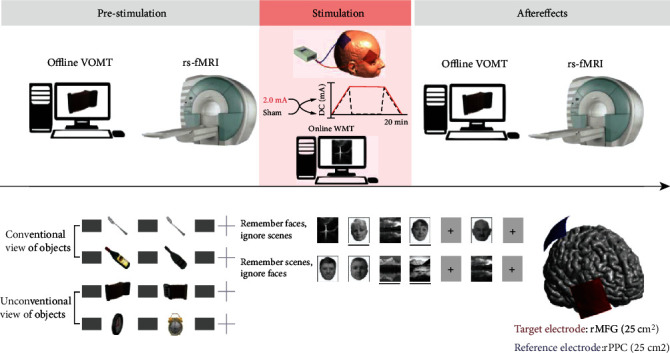Figure 1.

Experimental design and methods. (a) The crossover design involved two sessions with real 2 mA stimulation/sham tDCS with concurrent working memory task. Prior to and after the stimulation, participants performed a visual object matching task and underwent resting-state fMRI. (b) Offline VOMT—subjects respond whether the two consecutive objects are the same or different by pressing the YES/NO button in two difficulty levels (conventional view of objects—lower difficulty level; unconventional view of objects—higher difficulty level). (c) Online WMT—subjects view a block of faces and scenes (2 + 2, randomized order) preceded by a specific command on how to react to a probe which follows each block. Subjects respond whether the probe is consistent/inconsistent with the prior instruction by pressing the YES/NO button. (d) Montage for real and sham tDCS.
